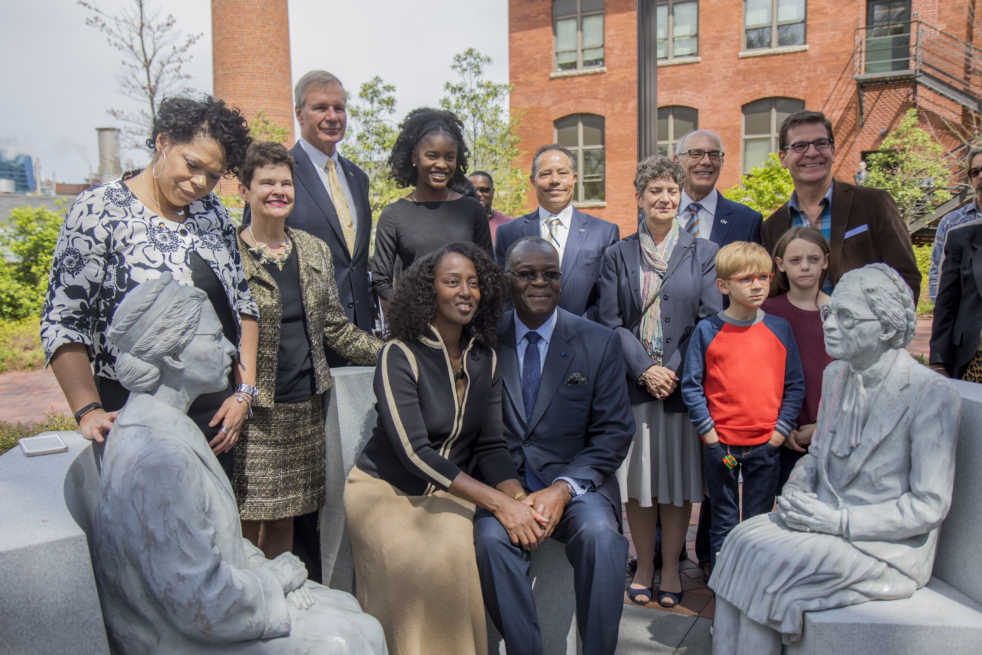On Thursday, April 5, hundreds of visitors and members of the Tech community gathered in Harrison Square for the dedication of a statue commemorating the life and accomplishments of Rosa Parks titled “Continuing the Conversation.”
The statue depicts two representations of Parks sitting: one at age 42, and one at age 92. In between the figures is an empty chair, meant for viewers of the memorial to sit, feel the presence of Parks and continue the dialogue surrounding the civil rights movement. The sculpture is the first on campus that depicts a woman.
Harrison Square was chosen as the home for “Continuing the Conversation” because the area is named for former Tech President Edwin Harrison, who held office during the civil rights movement in the 1960s. Under his leadership, Tech began accepting black students in 1961, making the Institute the first in the South to desegregate without a court order.
The ceremony had several special guests, including sculptor, Martin Dawe; the donors of the statue, Rodney and Michelle Atkins; members of President Harrison’s family; and a number of relatives of Parks. A relative of Reverend Dr. Martin Luther King, Jr., attended as well.
Leah Miller, president of the African American Student Union, third-year BA, kicked off
the ceremony.
“Like most of my peers, I am two generations removed from these change-makers of the civil rights movement,” Miller said. “Today, we will hear the context for and celebrate a new piece of art that has been added to the heart of the Georgia Tech community.”
After some words from Archie Ervin, vice president for institute diversity, and Provost Rafael Bras, Urana McCauley, the great niece of Parks, shared some stories
and thoughts.
“My aunt ended up spending her whole life working as an activist, not knowing that the actions that she did while she was young were going to prepare her for that tremendous act of defiance and courage on December 1, 1955,” McCauley said. “My hope is that this sculpture will inspire and create conversations that turn into action, and people will want to get involved.”
Dawe took the stage to give some insight into the process behind the sculpture and the role that technology has played.
“As a sculptor, technology has become a major part of my practice,” Dawe said. “The granite which you will see in the sculpture was carved in Elberton, Georgia, and was carved by a machine that was run by a computer.”
He said that he watched many videos of Parks and studied many photos to better understand the woman.
“I fell in the love with the way she spoke, and that strong, subdued character to her voice,” said Dawe. “For me, this sculpture is not just a monument to Rosa Parks. It’s an interactive sculpture installation. In the same way that she was the spark that ignited the Montgomery Bus Boycott, she is the vehicle for transformation in this piece. I hope that viewers will sit quietly, which won’t happen today, and they will be moved by the experience as they think about the issue of fairness, whether it’s social, economic or political.”
As Dawe finished speaking, he was moved to tears, as were others in the crowd at times during the ceremony.
After a few further comments, the statues were unveiled and Parks relatives took turns sitting between the two depictions of the woman sometimes referred to as “The Mother of the Civil Rights Movement.”
